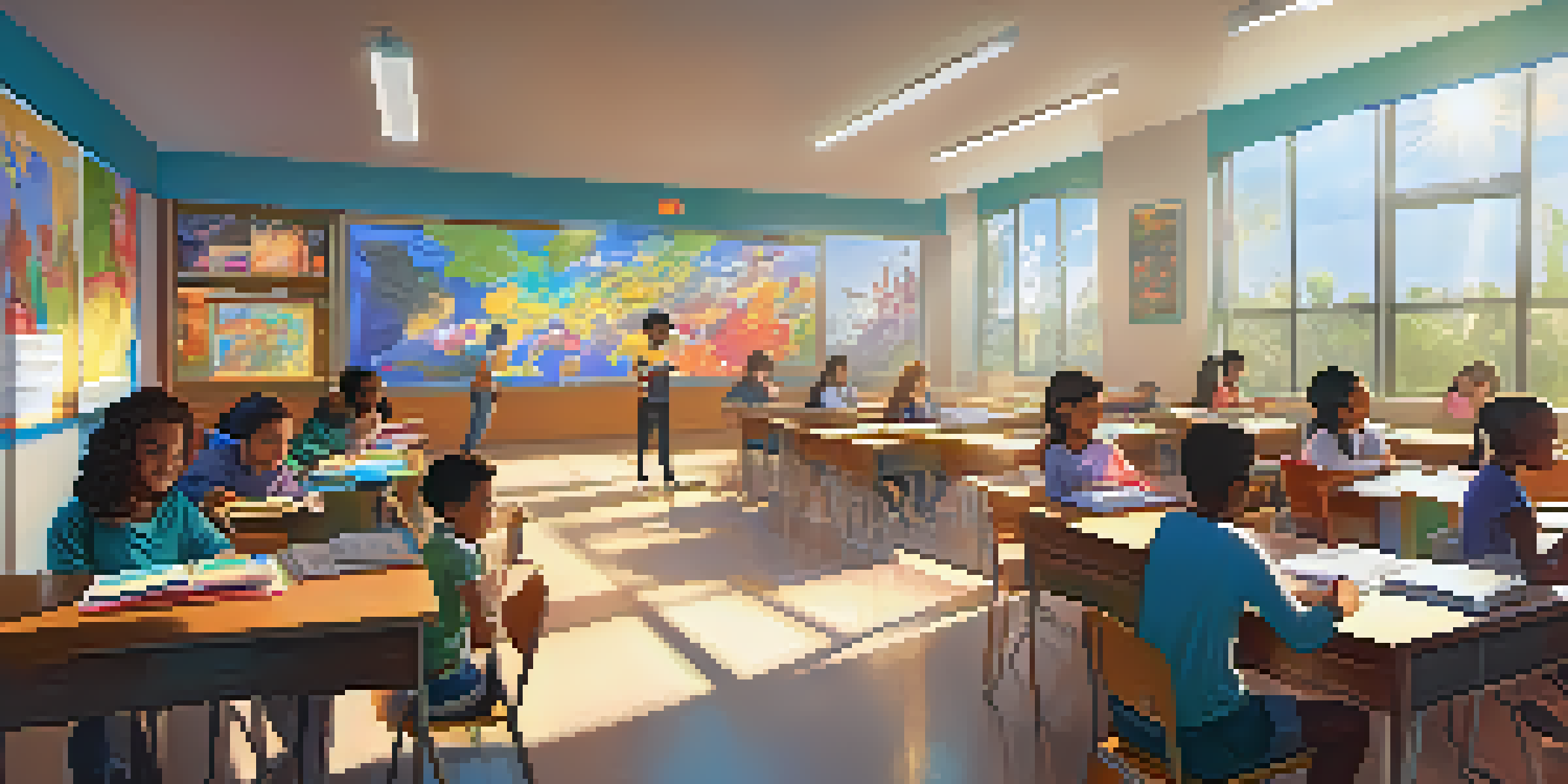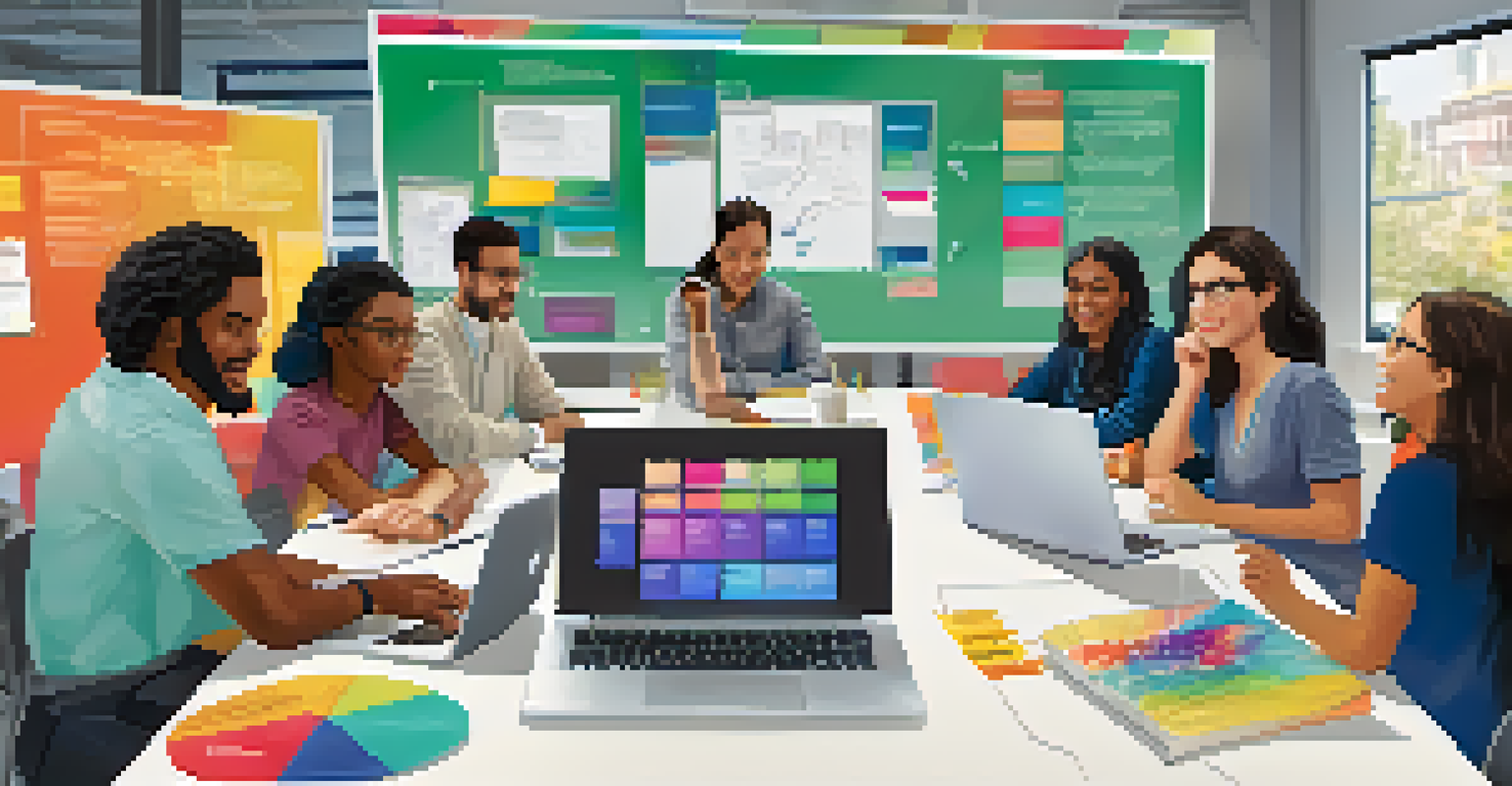Building a Transmedia Learning Network for Teachers

Understanding Transmedia Learning for Educators
Transmedia learning is an innovative approach that integrates multiple media platforms to enhance education. Think of it as storytelling that unfolds across various channels; for instance, combining videos, podcasts, and interactive websites. This strategy allows teachers to reach students through their preferred mediums, making learning more engaging and effective.
The greatest gift is a passion for reading. It is cheap, it consoles, it motivates, it inspires.
By understanding how different media can complement each other, educators can create a richer learning experience. For example, a history lesson could include a documentary, an interactive timeline, and a podcast featuring expert interviews. This multimedia approach caters to diverse learning styles, from visual to auditory.
Ultimately, transmedia learning fosters a more immersive educational environment, encouraging students to take charge of their learning journey. As students interact with content across platforms, they develop critical thinking skills and a deeper understanding of the subject matter.
Benefits of a Transmedia Learning Network
Building a transmedia learning network offers numerous benefits for both teachers and students. One of the key advantages is increased engagement; when students encounter content in various formats, they are more likely to stay interested and motivated. This dynamic approach also encourages collaboration among educators as they share resources and ideas.

Furthermore, transmedia networks facilitate personalized learning. Teachers can tailor content to meet the specific needs and interests of their students, allowing for differentiated instruction. For instance, while some students may thrive with visual aids, others might prefer hands-on activities or written materials.
Engaging Learning Through Multimedia
Transmedia learning enhances education by using various media formats, catering to diverse learning styles and keeping students engaged.
Additionally, these networks can promote community involvement. By inviting parents and local organizations to contribute content or resources, educators can create a more connected learning environment. This collaboration not only enriches the curriculum but also fosters a sense of belonging among students.
Key Components of a Transmedia Learning Network
To build an effective transmedia learning network, several key components should be considered. First, the choice of platforms is crucial; educators should use a mix of social media, blogs, and educational apps that resonate with their audience. This diversity ensures that content reaches students where they are most active.
Education is not the filling of a pail, but the lighting of a fire.
Next, content creation plays a vital role. Teachers should aim for high-quality, relevant materials that not only inform but inspire. By utilizing storytelling techniques, educators can craft narratives that captivate students, encouraging them to explore further.
Finally, continuous feedback and assessment are essential for growth. Teachers can gather insights from students about their experiences and adapt their strategies accordingly. This iterative process helps refine the network, ensuring it remains effective and engaging.
Creating Engaging Multimedia Content
Creating engaging multimedia content is at the heart of a successful transmedia learning network. Educators should focus on crafting varied materials that resonate with students, whether it's a compelling video, an interactive quiz, or a well-designed infographic. The key is to ensure that each piece of content serves a specific educational purpose.
For example, a science teacher might use a combination of animations to explain complex concepts, alongside real-life experiments to reinforce learning. This blend not only makes the subject matter more relatable but also allows students to see the practical applications of what they're learning.
Collaboration Boosts Educational Impact
A transmedia learning network thrives on collaboration among educators, allowing them to share resources, ideas, and best practices for improved student outcomes.
Moreover, incorporating student-generated content can enhance engagement even further. Encouraging students to create their own videos or presentations fosters creativity and ownership of their learning process. This collaborative effort not only strengthens their understanding but also builds a vibrant learning community.
Fostering Collaboration Among Educators
Collaboration among educators is essential to creating a robust transmedia learning network. By working together, teachers can share best practices, resources, and insights that enhance the overall learning experience. This collaboration can take the form of professional learning communities (PLCs) where educators meet regularly to exchange ideas.
Furthermore, using collaborative tools like Google Drive or Trello can streamline the process of content creation and sharing. These platforms allow educators to co-develop materials, track progress, and provide feedback in real-time, making the collaboration efficient and productive.
In addition, fostering a culture of collaboration encourages innovation. When teachers feel supported in their efforts to experiment with new ideas, they are more likely to take risks and try out different approaches, ultimately benefiting their students.
Involving Students in the Learning Process
Involving students in the learning process is a fundamental aspect of transmedia networks. When students have a voice in their education, they become more invested in their learning journey. For example, teachers can invite students to select topics of interest or suggest multimedia formats they enjoy.
Moreover, encouraging students to contribute to the content can be a powerful motivator. By allowing them to create videos, blogs, or podcasts, educators not only foster creativity but also help students develop essential skills such as critical thinking and digital literacy.
Student Involvement Enhances Ownership
Involving students in the learning process fosters creativity and ownership, motivating them to engage more deeply with their education.
This involvement also promotes a sense of ownership and responsibility. When students see their contributions valued, they are more likely to engage actively in their education, leading to improved outcomes and a more dynamic learning environment.
Evaluating the Impact of Transmedia Learning
Evaluating the impact of transmedia learning networks is crucial to understanding their effectiveness. Educators should establish clear metrics and goals to assess how well the network is meeting students' needs. This evaluation can include student feedback, performance data, and engagement levels across various media.
Additionally, qualitative assessments, like focus groups or interviews, can provide valuable insights into students' experiences. These discussions can reveal what aspects of the network resonate most and which areas may need improvement, helping educators to refine their approach.

Ultimately, regular evaluation ensures that the transmedia learning network remains relevant and effective. By being open to change and willing to adapt based on feedback, educators can create a vibrant and engaging learning environment that benefits both teachers and students.